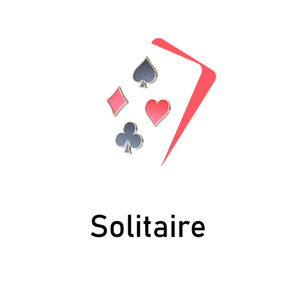What does mathematics have to do with solitaire?

They say solitaire is when a man stands versus the machine. But if computers are based on algorithms and mathematics, do we actually have any chance to beat them while making foundations and manoeuver among the piles?
Probably, we should be mathematicians to solve a solitaire mystery. If this were true, how come some of the best players have nothing to do with calculations, algebra or geometry. At the same time, the fundamental mathematics geniuses don’t practice the game so often.
Find out the fundamental connection between solitaire and mathematics before you give up on playing this game of patience due to your poor marks in this subject at school.
Probability – the main element in both mathematics and solitaire game
It’s been a long time since mathematics dealt with probabilities. And we are not here to mess your head with them at all. What matters is that you know this fact, but you might not know that solitaire is about probability, too.
First, there’s a concrete likelihood about the spread of the cards and its correlation with the probability you act through a specific strategy. There are many strategies you can undertake. And this is how many probabilities come alive.
Second of all, in solitaire, every next move is about probability. You don’t know what card you will open when you make your move. And vice versa – you don’t know if you will be able to open a card despite your move. It’s because, in the solitaire game, there’s an endless list of moves you can make depending on how the first cards will appear on the foundation, as well as which cards you will turn into the elements of your last moves.
The big mathematician question about the solitaire game
It’s a well-known fact that Solitaire is one of the oldest games. It’s also something we understand that since ancient times, solitaire was a popular form of entertainment on the one hand, and brain gymnastics on the other hand.
What few people might know, though, is that it’s been a bit more than a decade since the mathematicians fell in love with solitaire. This sparkle came alive when some of them tried to calculate the probability of winning this card game. Numerous sleepless nights were the cost to get the answer. Plenty of mathematicians used their styles, personal algorithms, and computerised approaches to solve this mathematical problem.
The mathematical features in the solitaire game
There are many visible mathematical elements inside this legendary card game. What matters more, though, is the pair of two invisible but critical features – the pattern and the symmetry.
If you try to think of the game outside of its entertaining function, you will understand how close it is to the architecture sphere. It’s all about building. While the raw resources and design follow the lead in houses, offices, stores and factories, the concrete preliminarily established pattern does in solitaire.
Yet, the pattern is nothing but a mathematical model to follow. We cannot understand, transfer, copy and paste or update it without using the science of mathematics. And solitaire is another argument to claim so.
In conclusion, we must say that mathematics has a lot to do with solitaire, but it’s not everything in the game. If you take this way in your attempt to understand how solitaire works, you will not make a mistake. What you have to remember is the set of five main mathematical takeaways to solve a solitaire game: to understand the probability, to know how important the primary arrangement of the cards is, to be ready to acquire a couple of algorithms in your strategy, to have an eye for the patterns and to keep calculating until finding the right combination.